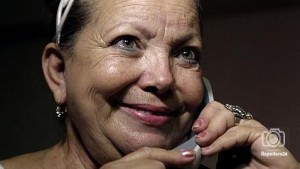 At the time of her death on October 14 in the intensive care ward of Calixto Garcia Hospital, three weeks had passed since Laura Pollan Toldeo had marched with the Ladies in White through the streets of Havana, the scene of her civic odyssey for the release of the political prisoners from the oppressive wave of 2003.
At the time of her death on October 14 in the intensive care ward of Calixto Garcia Hospital, three weeks had passed since Laura Pollan Toldeo had marched with the Ladies in White through the streets of Havana, the scene of her civic odyssey for the release of the political prisoners from the oppressive wave of 2003.
Days before Laura was admitted to the hospital, she faced the last physical aggression of the paramilitary group organized by State Security officials in front of her house at 963 Neptuno Street in Central Havana. A plain clothes policewoman violently bit her right arm, while several criminals shouted obscenities before the masked security officers.
It’s easy to imagine the consequences of the stress induced in this woman of 63, after nearly a decade of persecution, threats, insults and beatings to try to force her to desist from her Sunday visits to the Church of Santa Rita de Casia, in Miramar, from which she emerged accompanied by dozens of mothers and wives of prisoners, who changed the capital’s landscape with their gladioli, white robes and demands for freedom.
Only the vocation for public serve and the personal courage of Laura Pollan, Berta Soler and other women supported the constancy of these Cuban ladies. They raised their voices in the midst of terror, censorship and the indolence imposed by the uniformed despots.
Laura emerged as the leader of this civic resistance under extreme circumstances. She converted her home into the headquarters of the Ladies in White, in front of which her image traveled the world. The humble Spanish and literature teacher surprised the foreign correspondents on the island, the independent press and the Cuban military regime, which organized a siege and tried to link her face and her gentle voice to supposed external enemies.
The courage of this woman and her companions is already a chapter in the history of fights for human rights in Cuba. Her reputation grew in proportion to the regime’s intolerance. It was not for nothing that the Ladies in White received the Sakharov Prize from the European Parliament and other international awards.
Laura did not emerge alive from her ultimate odyssey in the intensive care ward of Calixto Garcia Hospital. There her ailments were multiplied. The acquisition of a virus increased her anemia, blood pressure and respiratory problems that led to her admittance. On Friday night her heart ceased to beat.
The haste with which the authorities incinerated her remains and delivered them in the early morning hours to her husband and daughter is suspicious. The end of her life should not be interpreted as a victory for the government and a defeat of the peaceful opposition. No one know what will happen at 963 Neptuno Street without her presence, but one just has to look at the faces of the afflicted her paid homage between Saturday the 15th and Monday the 17th to know that Laura Pollan Toledo is already back. She is a symbol of light in the night of the Castro regime.
October 19 2011
